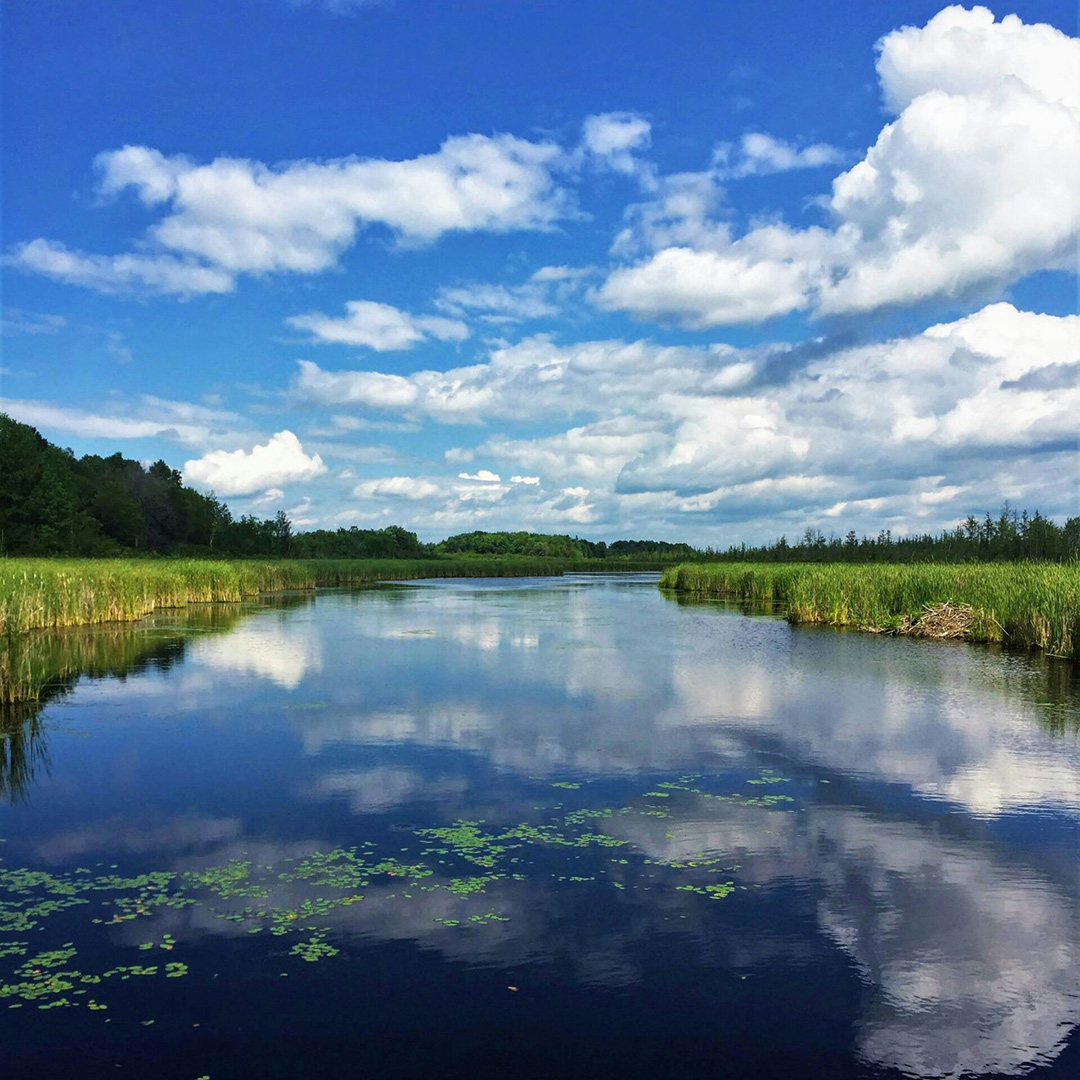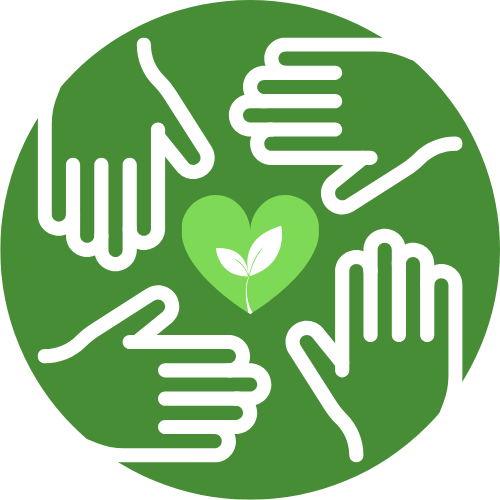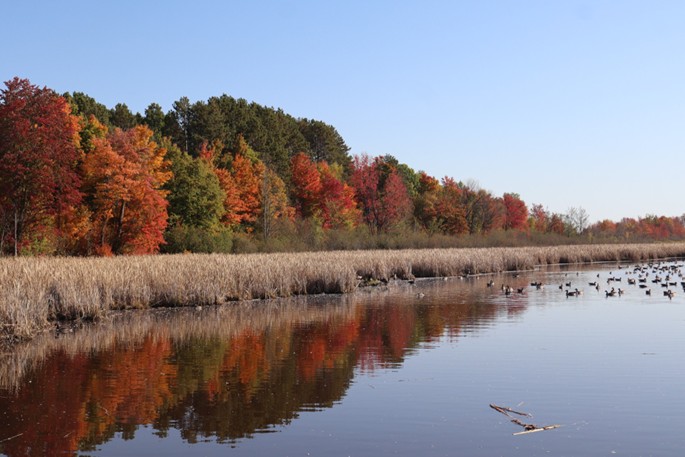The National Capital Greenbelt
Overview
The National Capital Greenbelt is an essential mosaic of natural habitats, protectively encircling the southern outskirts of Ottawa. Established in the 1950s and mostly owned by the National Capital Commission (NCC), it spans over 20,000 hectares of biodiverse ecosystems such as forests, alvars, sand dunes and peat bogs and is home to over 60 at-risk species. The Greenbelt also provides rich and productive farmland that helps feed the region while also being an accessible place for the local community to relax and connect with nature. Today, it remains one of the largest greenbelts in the world with a unique opportunity to serve as a national and international gateway for people to learn about Canada’s environment and heritage in the National Capital Region.
Unfortunately, the National Capital Greenbelt remains largely unprotected and is therefore under threat of encroachment from roadways and urban and industrial development. It is crucial for both nature and the community that this area is given the protection it deserves which is why CPAWS-OV is working with local partners and stakeholders, including indigenous groups, to secure a future for the Greenbelt.

National Urban Park Status
Parks Canada is working to protect more green spaces in urban areas, bringing the many benefits of having access to nature to the people living in our major cities. This important network also makes space for nature to thrive while ensuring it will still be there for future generations. You can learn more about National Urban Parks by following this link: National urban parks – Parks Canada
CPAWS-OV along with our National Capital Greenbelt Committee have been pushing to obtain National Urban Park status for the greenbelt, believing it is a prime candidate for such a designation. Despite our efforts, we have been informed that this will not be possible for the time being.
We will continue to advocate for National Urban Park status but in the meantime, we are looking to make sure the Greenbelt’s borders are protected in legislation against any threat of encroachment.
Our Campaign Goals
 The protection and care of the Greenbelt is a long term project which will require a wider community approach. The more people involved, the more voices shared the better our chances of success! Here are a few of the steps we have started climbing.
The protection and care of the Greenbelt is a long term project which will require a wider community approach. The more people involved, the more voices shared the better our chances of success! Here are a few of the steps we have started climbing.
Stakeholder Engagement: We are in the process of engaging local stakeholders; environmental groups, local schools and businesses, community associates and elected officials and making good headway. Gaining valuable insight and growing support will be imperative to this campaign. If you would like to participate, please contact Maggie by email at greenbelt@cpaws.org
Lobby Day: Join us is showing our support for a robust management plan and legislative protection for the Greenbelt at a Lobby Day this January. More information including how to sign up can be found here.
Greenbelt Forum: In February we will be hosting a stakeholder event to bring these individuals and groups together to shape a collective vision for the future. Interested in attending to represent your association or organisation? Read more about this event here.
Gaining Protection: Until we are able to obtain National Urban Park status, we will push for legislative protection similar to the Gatineau Park Bill, securing legislated boundaries and ensuring safeguarding mechanisms are in place to prevent the encroachment of housing and other infrastructure.
Management: Create a long term, sustainable, co-management plan with local groups including indigenous communities where we share knowledge and ensure the health and resiliency of the many eco-systems in the Greenbelt.
Outreach: Finally, if we want the Greenbelt to continue to be looked after and valued, we need people to engage with it, to feel a sense of pride and belonging. This is why we would also like to establish a visitor center as a hub for education and outreach, an invitation to everyone to enjoy and care for this gem at their doorstep.
Let's make sure our National Capital Region has a green future...
Help us protect the Greenbelt!
How you can help!

Volunteer
We need your help with entering petition data and to canvas for petition signatures. Send Maggie an email at: greenbelt@cpaws.org to get started! Need other ways to take part? We are looking for photos and videos of people describing what they love about the Greenbelt to grow the momentum so please send them in!

Lobby day
Join us on our Lobby day in January and let your Member of Council know just how much the Greenbelt means to you. Send Maggie an email at: greenbelt@cpaws.org to get started!

Sign our petitions
We have been gathering signatures and will soon be setting up an e-petition to show parliament how much the people of the Ottawa region love it’s Greenbelt! Make sure to stop by the office to sign in person and sign up to our newsletter to find out when our e-petition is live.

Donate
All donations are greatly appreciated and go a long way in ensuring we can continue to fight for protection of the Greenbelt. Follow this link, set up a one time or monthly donation and write Greenbelt Campaign when prompted to support this important cause.

NCC Greenbelt Master Plan
The National Capital Commision Greenbelt Master plan will soon be renewed. We are looking to be included as advisors in the process to make sure the health of the environment and the protection of biodiversity is made a top priority.
You can read through the current Greenbelt Master Plan by clicking on the button below
The Greenbelt feeds our community
As our world’s population increases, so does our communities’ need for food. Over the next 30 years, experts predict a need to increase food production by at least 70%!
A healthy and protected Greenbelt can help curb food insecurity across the Ottawa Valley by providing high quality produce with a low carbon footprint. Around 5,000 hectares of the Greenbelt is leased to farmers. By providing fertile ground for local and sustainable agriculture it can play a critical role in feeding the nearly 1.5 million people living in the region, while supporting a vibrant and culturally rich farming community.
Read our comments on the proposed Brian Coburn Boulevard extension across the Greenbelt near Mer Bleue.
The Mer Bleue bog
The Mer Bleue bog is an internationally recognized wetland that is over 7,700 years old! What makes it special is much more than its impressive age. The Mer Bleu Bog is home to wildlife you would typically only find within northern boreal bogs while also providing a safe haven for regionally rare plants and birds. At Mer Bleue, you’ll spot muskrat, mink, cottontail and snowshoe hare, white-tailed deer, moose, and more. Another important feature of this impressive wetland is its role in mitigating climate change which has earned it the following national and international designations:
- A wetland of international importance under the Ramsar Convention on Wetlands
- A provincially significant wetland
- A provincially significant life and earth science area of natural and scientific interest
The Greenbelt is a fragile ecosystem providing vital climate change mitigation for our communities and species at risk. A 1.5°C increase in global average temperatures will put up to 30% of the world’s species at risk of extinction–and Canada has already experienced a 1.7°C increase. Mer Bleue provides a once in a lifetime opportunity for you to experience a northern boreal landscape within minutes of downtown Ottawa while supporting climate action for animals and communities alike.